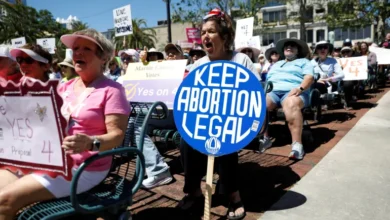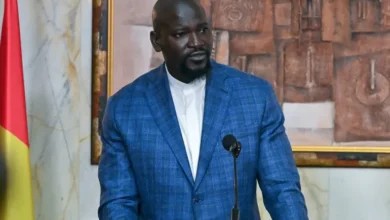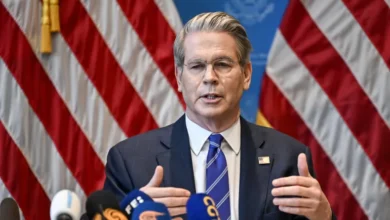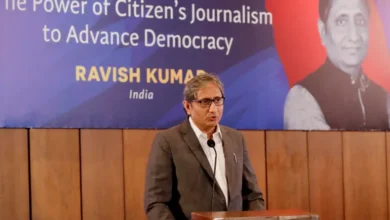The US is facing a loneliness ‘epidemic’. Can art help reverse the trend?
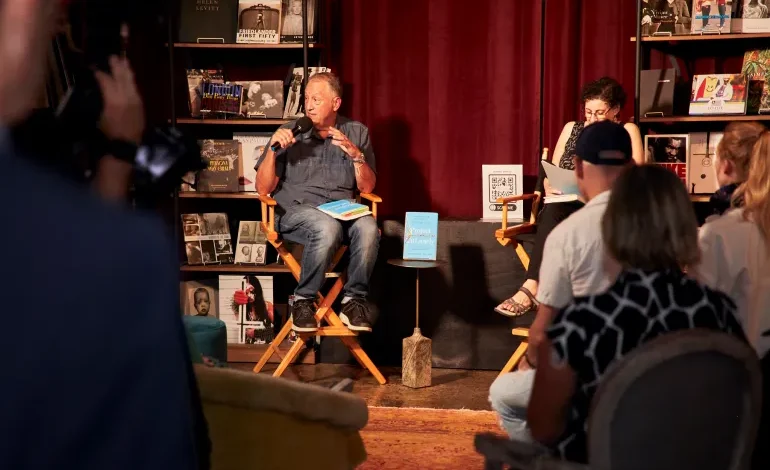
Early one morning in the spring of 1969, Jeremy Nobel went downstairs to the living room of his family home in Pittsburgh, Pennsylvania, to get ready for school.
There, he found his father sitting on the sofa, looking as white as a sheet and clearly in pain. He instructed Nobel, who was 15 years old at the time, to wake his mother and have her call for help.
The police soon arrived. They slipped an oxygen mask on his father’s face, loaded him onto a stretcher and whisked him off to the local medical centre.
That was the last time Nobel saw his father alive. He died of a heart attack at 47 years old.
After his father’s death, Nobel felt despondent, rudderless. Though he kept up with his school activities and friends, Nobel experienced what he calls spiritual or existential loneliness. He questioned his self-worth and how he could lead a safe and secure life.
He did not talk at all about his father’s death with his friends. “The loneliness was below the surface,” he said.
Looking back, Nobel sees that day in 1969 as pivotal to who he is today: a primary-care physician, public health practitioner and faculty member at Harvard Medical School. But he wishes he had received guidance at the time to help him cope with the loneliness he felt.
Now, more than 50 years later, he has written a book to do just that for others. Published last month, Project UnLonely: Healing Our Crisis of Disconnection aims to unravel how loneliness can affect physical and mental health — and how it can be addressed.
A national epidemic
The book comes at a time when health experts are raising the alarm on loneliness. In May, the United States Surgeon General, Vivek Murthy, released an advisory highlighting loneliness as an “epidemic” and a public health “crisis”.The advisory defined loneliness as a “distressing experience” arising from “perceived isolation or inadequate meaningful connections”. It added, however, that loneliness is subjective, happening when there is a discrepancy between “an individual’s preferred and actual experiences”.
Still, the Surgeon General said loneliness is “more widespread than other major health issues in the US”, including diabetes and obesity.
Even before COVID-19, about half of American adults said they were experiencing loneliness, the advisory explained. The situation only got worse during the pandemic, when many people were cut off from friends and family and lost work or loved ones.
Though most people feel lonely sometimes, a chronic sense of isolation can have vast health ramifications, increasing the risk of cardiovascular disease, dementia, stroke, depression, anxiety and premature death.
A Meta-Gallup poll from October indicated that the problem was worldwide. Nearly one in four people, surveyed from across 140 countries, identified as “very” or “fairly lonely”.
“Loneliness is not an illness or a disease. It’s a brain state, it’s a mood, it’s an emotion,” Nobel said.
“The human experience of loneliness can be perhaps best viewed as a biologic signal that there’s something you need, just as thirst is a biologic signal that you need hydration. It’s very good that we’re thirsty, and yet if you become toxically thirsty or dehydrated, you could die from that.”
Nobel has studied loneliness for almost 20 years. He even developed a course on the subject, entitled Loneliness and Public Health, and founded and leads a nonprofit that helps address loneliness through community programming.
His interest in social isolation began in the early 1980s when he was working as a primary care physician in Boston.
As he treated patients of different ages and backgrounds, he started to notice how loneliness can have direct effects on other aspects of their healthcare. They skipped taking their prescribed medications, for instance, or did not schedule follow-up visits.
“Loneliness changes how we behave,” Nobel said. “Our motivation for self-care, taking medications in a timely and appropriate way, partnering with the healthcare delivery system in effective ways — that ability and the motivation to do that becomes weaker as people become lonely.”
While many experts agree that loneliness is a serious health problem, some question calling it an epidemic.
Eric Klinenberg, a sociology professor at New York University, said that “epidemic” implies a significant spike in loneliness. He explained there is not strong enough evidence to support that claim.
“Studies of loneliness are all over the map, and the trends over time are hard to assess,” he said.
“If we call it an epidemic, we signal that it requires extra attention and also that it requires less attention when it ebbs. I think it’s more accurate, and more helpful, to define it as a durable health problem, one that is tied up in modern life and has been for ages.”
Creativity fosters connection
However loneliness is labelled, organisations and individuals are adopting different strategies to tackle it.
The Surgeon General’s report outlines a framework to advance social connections. It includes strengthening community infrastructure like parks and libraries, educating healthcare providers and reducing the potential harms of socialising online.
For Nobel, part of the solution lies in the arts. His interest in that approach was piqued after visiting a 2002 art show. The pictures on display were from children in New York City, depicting what they had experienced during the attacks on September 11, 2001.


